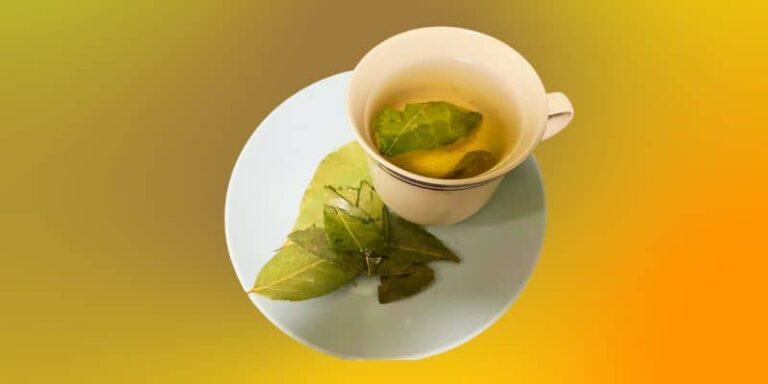5 Difference Between West Indian Bay Leaf And Genuine Bay
The botanical name of the West Indian bay leaf tree is Pimenta racemosa. The plant is called bay rum tree as well. West Indian bay leaf tree is native to the Caribbean region.
In addition, West Indian bay leaf tree is a memeber of a different family from the Bay Laurel plant family.

Although both bay leaves have a similar appearance there are some differences. The leaves of the West Indian bay tree are broader and larger than those of the Laurus nobilis tree leaves.
West Indian Bay tree leaves are usually between 3 to 6 inches long. And they have a glossy and dark green color.
West Indian bay leaves have a strong and aromatic fragrance with hints of clove and spice.
But there are other differences between both bay leaves. Let’s look at five differences between West Indian and Mediterranean Bay leaves.
West Indian vs Mediterranean Bay Leaves
Both types of bay leaves have a strong resemblance. But they also have some things that are unique to each type of bay leaf.
1. Plant Species
These plants belong to different plant species. West Indian bay leaf comes from the Pimenta species. Mediterranean bay leaf comes from Laurus nobilis.
2. Leaf Appearance
West Indian bay leaves are broader and larger, usually measuring about 3 to 6 inches long. Mediterranean bay leaves are typically smaller and more narrow.
3. Flavor and Aroma
Mediterranean bay leaves have a milder, herbal flavor with a slightly floral aroma. While West Indian bay leaves have a stronger, more sharp flavor with hints of clove and allspice.
4. Leaf Uses
Mediterranean bay leaves are widely used in Mediterranean and European cuisines for flavoring various dishes.
West Indian bay leaves are used in Caribbean and Latin American cuisines. They give a distinct flavor to dishes like stews, soups, and marinades. In Jamaica, West Indian bay leaves are used to make herbal tea as well.
5. Availability
Mediterranean bay leaves are more widely available. They can be found in grocery stores and markets worldwide.
On the other hand, West Indian bay leaves may be harder to find. If you are outside of the Caribbean region, you may have to look for them online or specialized stores.
West Indian Bay leaf Tea
Making Bay leaf tea with West Indian bay leaves is just like making tea with Bay Laurel leaves. All you need is West Indian bay leaves and water.
The amount of water you use depends on how much tea you are making. But you could consider using approximately 1 to 2 bay leaves per cup of water. Also feel free to adjust the quantity based on the strength of the flavor you want.
- Bring the water to a boil
- Add the bay leaves
- Turn off the heat and cover the container
- Let the bay leaves steep in the hot water for 7 to 10 minutes
- Strain, sweeten to taste and serve
Remember you can adjust the steeping time and the number of bay leaves used based on your personal taste preference.
West Indian Bay Leaf Benefits
Despite not being a true bay tree, West Indian bay the leaves have similar health benefits to the Laurus nobilis plant.
For example, one research published in 2018 lists some of the benefits of West Indian bay leaves. The study reports that West Indian bay leaves are rich in phenolic compounds.
Phenolic compounds that were isolated from West Indian bay leaves showed antioxidant, analgesic, anti-inflammatory, antinociceptive, and hepatoprotective behavior.
So, these are a few benefits of West Indian bay leaves
| Anti-inflammatory | May relieve sore, swollen aching joints and muscles |
| Antioxidants | May protect body from agents that damage cells and increase the risk of developing different disease. |
| Analgesic | Plant compounds in West Indian bay leaves are proven to relieve several types of pain. |
| Hepatoprotective | May help protect the liver from damage. |
| Anticancer | West Indian bay leaves have a plant compound-Lupeol-which has been tested and found to show cancer fighting potential. |
West Indian Bay Leaf Side Effects
Some users have reported experiiencing side effeects while using West Indian bay leaves.
Note that not everyone who uses West Indian bay leaf will experience these side effects. And the degree of side effects can vary from person to person.
Allergic Reactions
Some individuals may be allergic to West Indian bay leaves.
If you have known allergies to plants such as allspice, cloves or eucalyptus, it’s advisable to exercise caution or avoid the use of West Indian bay leaves.
Skin Sensitivity
Direct contact with West Indian bay leaves or their essential oil may cause skin irritation or allergic reactions in some individuals.
It’s recommended to do a patch test before applying West Indian bay products to the your skin.
Pregnancy and Breastfeeding
There is very little information on the safety of West Indian bay leaves during pregnancy and breastfeeding.
Pregnant or breastfeeding individuals should consult with a healthcare professional before using West Indian bay leaves.
Medication Interactions
If you are taking any medications, you may want to talk with your doctor to ensure there are no potential interactions before using West Indian bay leaf.
Digestive Discomfort
In some cases, excessive consumption of West Indian bay leaves or their products may cause stomach upset, nausea, or digestive issues.
So it’s important to use them in moderation and follow recommended dosage guidelines.
Buy West Indian Bay Leaf
So where can you buy bay leaves? Here are a few suggested places where you can buy organic West Indian bay leaves:
Online retailers: Many online retailers specialize in selling herbs, spices, and culinary ingredients. Check popular online marketplaces or specialty food websites that offer a wide range of international ingredients.
Local farmers markets: Visit local farmers markets that feature diverse produce and specialty items. You may find vendors selling West Indian bay leaf or they may be able to get the leaves for you.
Caribbean or Latin American grocery stores: West Indian bay leaves are commonly used in Caribbean and Latin American cuisines, so local stores catering to these culinary traditions may carry them.
Herbal or health food stores: ome herbal or health food stores carry a variety of dried herbs and spices, including West Indian bay leaves. Check with your local store to see if they have them in stock.
Conclusion
Overall, West Indian bay leaf is a unique and aromatic leaf that adds a delightful flavor and fragrance to various dishes and products. It is also used to make hot tea.
It’s important to note that the West Indian bay leaf is different from the bay leaf commonly found in grocery stores, which is usually the leaf of the Laurus nobilis tree.
While they may share some similarities in flavor, they have distinct profiles because they come from different plant species.
It’s always a good idea to consult a healthcare professional before incorporating any herbal teas into your routine, especially if you have underlying health conditions or are taking medications.
Disclaminer: The information in this article is for informational purposes only. Nothing stated here should be viewed as medical advice. please consult with your Professional healthcare provider about matters relating to medical care.

